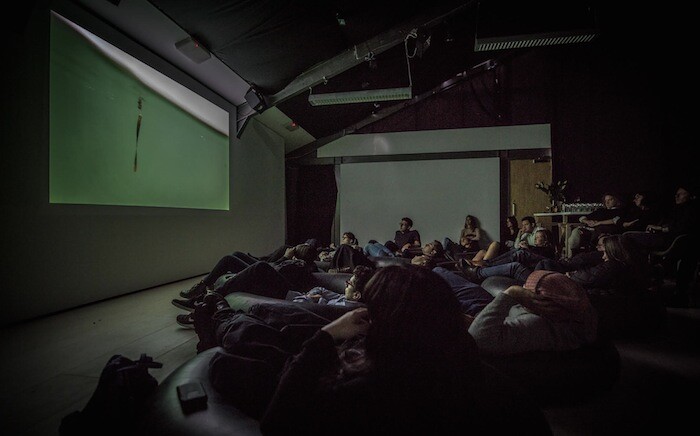Categories
Subjects
Authors
Artists
Venues
Locations
Calendar
Filter
Done
March 4, 2020 – Review
“Contagio”
Lorena Muñoz-Alonso

The logic of contagion rests on an “us vs them” binary—healthy/sick, in/out, loved/feared—and this exhibition of nine mostly UK-based Latin American artists has the feeling of a diverse group banding together for support. Instigated and curated by the Venezuelan painter Jaime Gili, it foregrounds the importance of collegiality and self-organization in an increasingly hostile environment.
The show tackles pressing political questions with a looseness and lightness of touch characterized by subtle metaphors rather than on-the-nose statements (the exception is a billboard-sized map at the entrance to the gallery, which shows the proliferation of legal and illegal mines across the Amazon basin). In Martín Cordiano’s Host (2020), a tall reading lamp pierces through a mid-century sideboard, on one corner of which a massive sphere of plaster bulges like a tumor. The result is witty, oddly beautiful, and violent. The exhibition text identifies Jacques Derrida’s writing on hospitality as an influence on Cordiano, who seems here to be giving form to the anxieties generated by the a guest’s fragile relationship to their host: a figure who ostensibly extends care while constantly policing the boundaries of the offer of hospitality.
Resting on a nearby plinth is an oversized bronze cast of a …
September 24, 2015 – Review
Coco Fusco’s “And the Sea Will Talk to You”
Colin Perry

Much is said and little is shown in Coco Fusco’s video installation And the Sea Will Talk to You (2012). We are on a raft, it seems, adrift in the middle of the Florida Straits, the camera dipping intermittently below the turquoise waves and back up to a blank horizon. A watery soundtrack washes back and forth rhythmically. The video’s narrative is told through first-person voice-over accounts in English and Spanish that detail two journeys heading in opposite directions: a family flees from Cuba to Florida on a rickety sea-going vessel; an American-Cuban woman—much like Fusco—catches a series of flights to return her mother’s ashes to the island. While the female narrator worries about being caught out and having her mother’s remains confiscated, the emigrant family contemplates sharks, uncertainty and death. The viewer is placed in the latter’s position, both in the point-of-view of the camera, and in the installation itself. On the gallery floor, in front of the screen, are an array of black rubber rings, the pungent inner tubes of tractor tires. I plonk myself into one. It’s uncomfortable—which is, no doubt, the point.
The work recalls specific histories of Cuban migration, notably the 1994 economic-political crisis that saw …